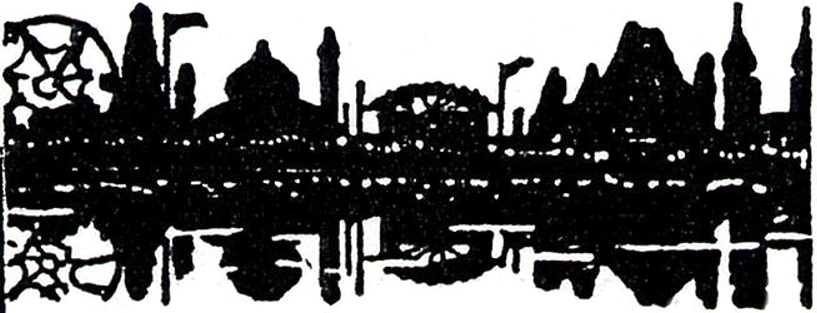

 |
||
 |
||
 |
|
|
Spokane’s Natatorium Park was one of the earliest amusement parks in the Northwest. The Park was located on the Spokane River where it begins a big “S” curve. It was several miles from the center of town at the end of Boone Avenue. The park was originally called Ingersoll Park which had a picnic area near the river. In 1887, a Spokane capitalist by the name of Sherwood, financed a cable car line across the first wooden Monroe Street Bridge. The cable car needed a destination at the end to attract riders. So they installed a baseball field that opened on July 18, 1889. The park was very crowded on baseball days but empty at other times. A year later, a casino and bar opened there on July 26, 1890. The name was changed to Twickenham Park after a housing development of the same name. In 1893, the Spokane Street Railway, which was owned by the Washington Water Power Company (WWP), bought the entire park and decided to expand it into an amusement park patterned after Coney Island. They built a swimming pool next to the river and set about to rename the park. They stumbled across the Latin word for an indoor swimming pool – natatorium. Over the years, the park became known as Nat Park. |
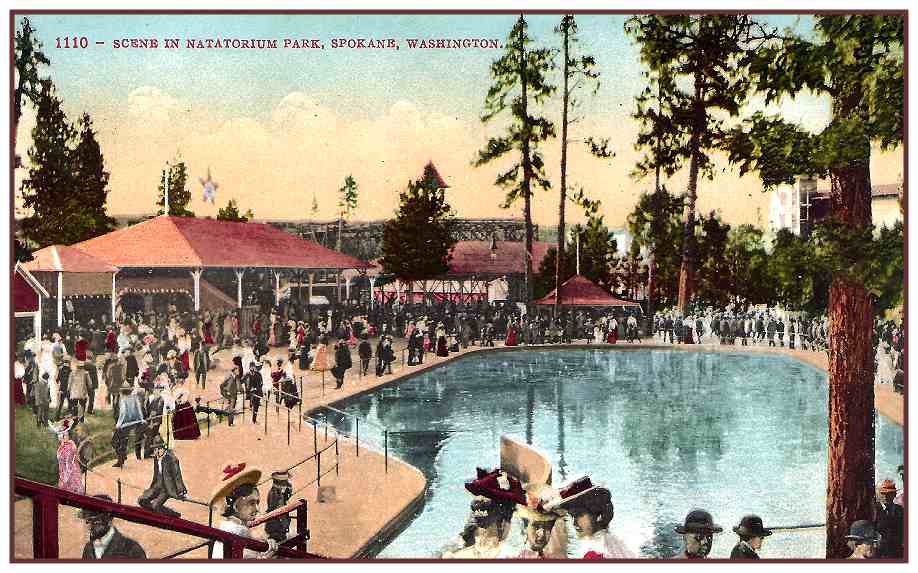 |
|||||||||
|
Patrons of the park could take the West Boone Avenue streetcar for five cents to get to the park at the end of the line. Families took picnic lunches and enjoyed the baseball games, the rides and the swimming pool. It was the first heated pool in Washington State and it was filled with river water. Natatorium Park also featured a beautifully landscaped garden and picnic grounds, along with a lily pond and an elaborate outdoor fountain. The Scenic Railway, an early roller coaster ride which would only go about 10 mph, was built in 1905. |
|||||||||
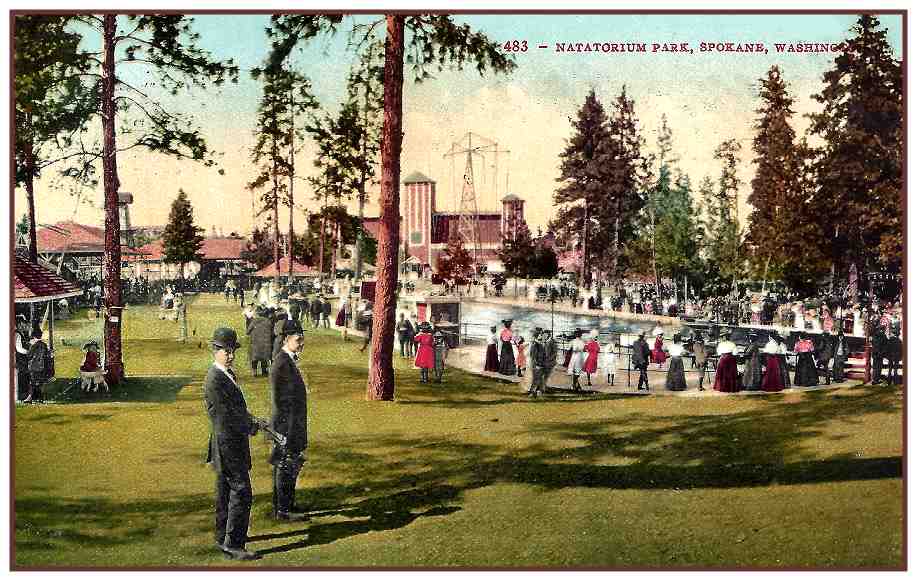 |
|||||||||
|
Another ride, Ye Olde Mill, an indoor boat ride where riders were taken past varying types of scenery, also opened in 1905. Ye Olde Mill’s canal ride was 825 feet long and riders would pass by a number of scenes which were updated from year to year. Over the years, the scenes included an inferno, a Japanese flower garden, pastoral scenes, an Indian camp, a Southern cotton field, the Rock of Ages, Niagara Falls, Eskimos in the frozen north, fish in an underwater garden, a farm yard and the Great Wall of China. In the heart of the cavern was a hall, where a small orchestra played each day the park was open. Life-like menagerie animals were included in the scenery. These animals were made of plaster and imported from Paris. The animals growled, shook their heads and moved, and appeared very life-like when viewed in the darkness of the ride. Ye Olde Mill burned in June 1918 and it was torn down. The Whip was built in its place. |
|||||||||
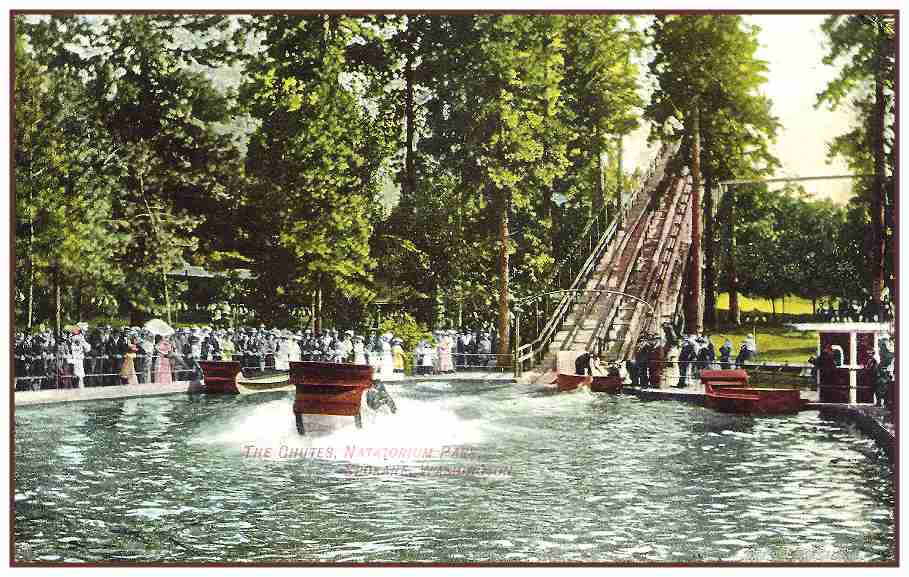 |
|||||||||
|
A Shoot the Chutes was added to the Park in 1907. Riders boarded a flat-bottomed boat and they were pulled up a 300 foot long, 100 foot high ramp to a tower at the top of the ride. The boat was turned around and launched down the chute in a manner similar to the log rides that are common in amusement parks today. The lake at the bottom of the chute was 200 feet long and 80 feet wide. The lake was filled with concrete in the 1920's and it became the location of the Custer Speedway. |
|||||||||
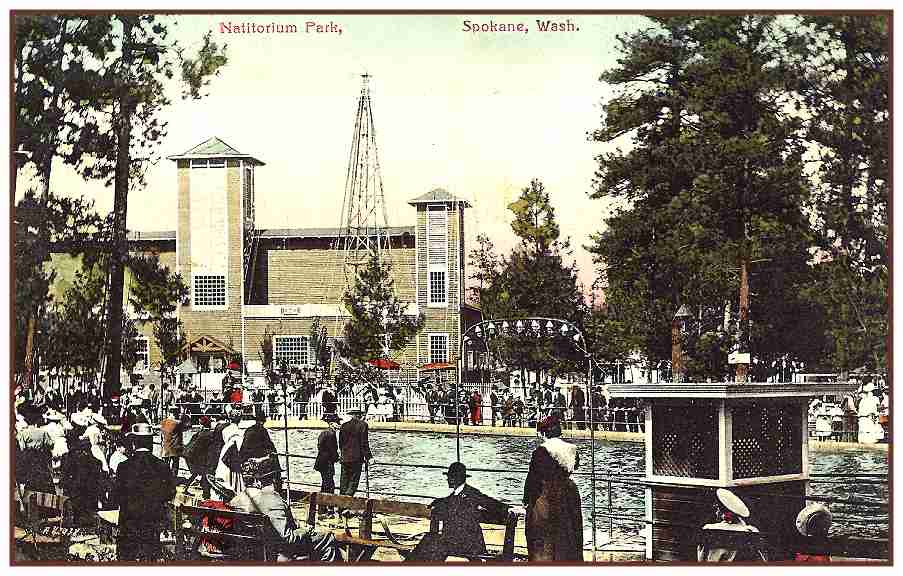 |
|||||||||
|
The Circle Swing dates back to 1907 when its original plans were drawn. The ride featured a 90-foot tall tower structure in the middle from which a set of swings was suspended. When the ride was activated, the swings picked up speed and swung around away from the tower and over the top of the patrons waiting in line. As the years went by, the ride was modernized by replacing the swings with biplanes, and eventually the biplanes were replaced with stainless steel rocket ships. Over the years, this ride was also known as the Flying Airship and Captive Aeroplane as well as other names. The ride remained until 1964, when its long-standing tower was removed from the park. |
|||||||||
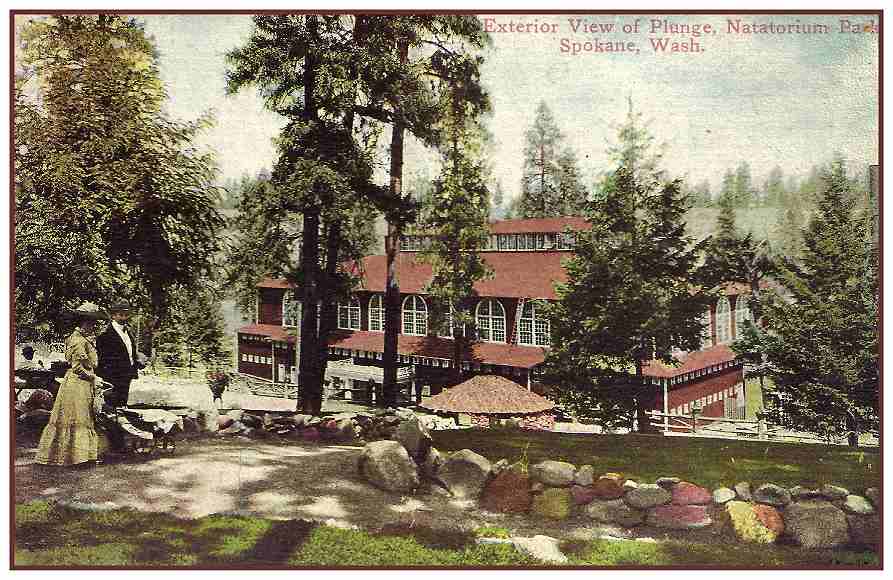 |
|||||||||
|
Famed carousel maker, Charles I.D. Looff who was born in Denmark, immigrated to America in 1870 and began work as a furniture carver. In his spare time, he began carving horses and other animals, building his first carousel four years later. It was subsequently installed as the first carousel at Coney Island in 1876. Looff opened a factory in Brooklyn in New York City and began building carousels that ended up in amusement parks all over America. About 1907, Looff was commissioned to build a carousel for Natatorium Park in Spokane. It took two years to carve the animals and build the carousel. The carousel contains 54 horses, a giraffe, a tiger and two chariots, all hand carved by Looff himself. It also has a brass ring dispenser that allows the outside riders to grab a ring during each pass and then toss the ring at a clown with a hole for his mouth. If the rider is successful in capturing the brass ring, he or she can turn it in to win a free ride on the carousel. Each set of three horses balance from a heavy rod called a 'crank'. Every horse jumps six times on every revolution of the carousel. When Looff shipped the carousel to Spokane two years later, he discovered that his contract was not valid and WWP balked at paying the $20,000 price tag. So Looff gave the carousel to his daughter Emma and her husband Louis Vogel as a wedding present. A deal was struck for Louis Vogel to operate the carousel and other attractions at a percentage. Vogel worked as Concessions Director for the next 20 years. |
|||||||||
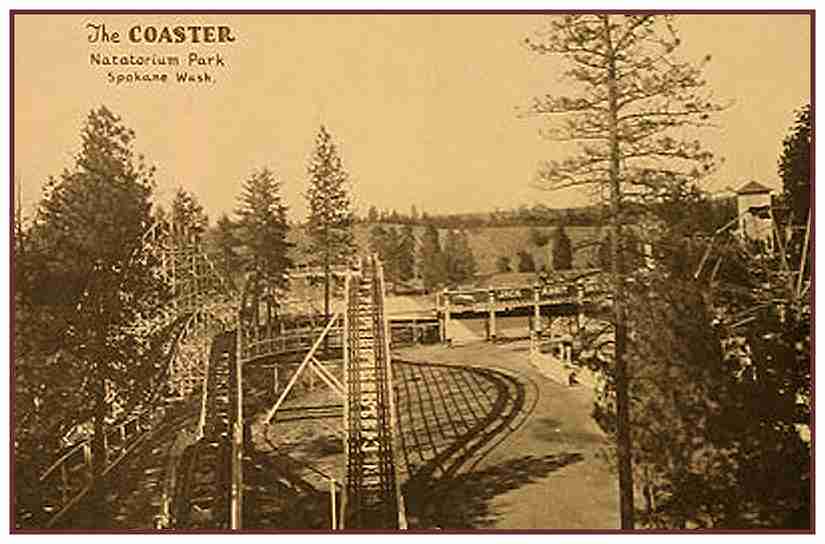 |
|||||||||
|
The Jack Rabbit was a wooden roller coaster that was built in 1920 in a figure eight layout approximately 475 feet long and 75 feet wide with 2000 feet of track. It was boasted that this coaster reached a speed of 70 mph and was the fastest coaster in existence, though there was no basis to either claim. The only fatality recorded at the Park during its years of operation occurred on the Jack Rabbit. A new employee was walking the tracks when the ride was activated and he was struck by an oncoming train. Vogel bought Natatorium Park from WWP on April 13,1929 for $137,500. He changed some of the park’s rides and he tried to add new attractions on a yearly basis. He added Custer Speedway and the Pretzel Dark ride about the time that the Great Depression began. The name was changed to “Fun in the Dark” in 1937 and the “Joy Wheel” was renamed the “Nut House” that same year. In 1936, the streetcar line was abandoned and the cars were burned on site at the park. One streetcar was not burned and it is said to be under restoration. In 1939, the baseball field became the Midget Raceway. |
|||||||||
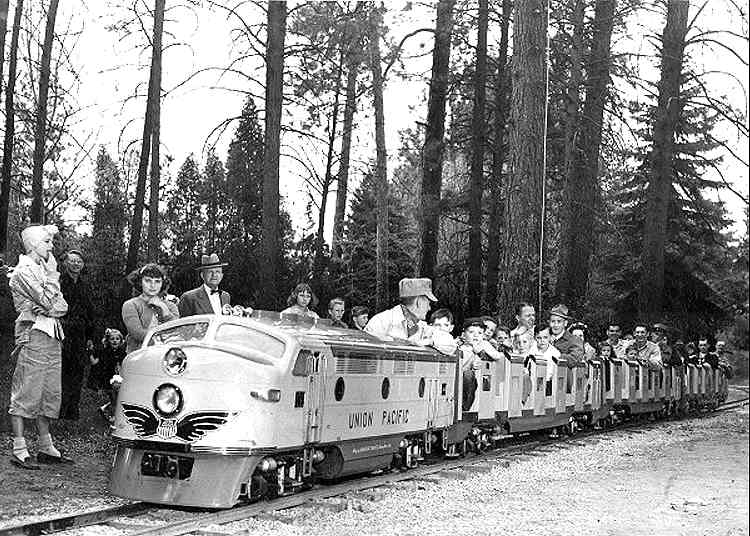 |
|||||||||
|
The last addition to the park was the “Golden Spike” which opened in the spring of 1952. It was a 16-gage miniature train, manufactured by the Miniature Train Mfg. Co. of Rensselaer, Indiana. The ride had 2000 feet of 12 pound rail and it featured a train station and a tunnel, as well as several miniature train crossing signals. Its route wound back and forth through a narrow course, with tracks so close together that they shared ties between the rails for two different directions. The train had a top speed of 12 mph and it had vacuum brakes on each wheel. The pool was dismantled in 1956. The park was operated by the Vogels until they sold it to the Shriners for $75,000 in 1962. The Shriners did not re-open the park for three years. After Louie Vogel’s son, Lloyd passed away, Bill Oliver managed the park for the Shriners beginning in 1965 and no improvements were made to attract patrons. The park closed for the last time at the end of the 1967 season. In November that year, the park rides and equipment were advertised for sale in a magazine published for amusement parks. In the spring of 1968, the park rides were dismantled and the Jack Rabbit was burned on site. The cars from the train are privately owned and are currently in storage. One remaining space ship from the swinging spaceship ride is located in Wallace, Idaho and it is privately owned. The Rock-O-Plane was moved to Thrill-ville USA, an amusement park in Turner, Oregon which closed in 2008. It is not known where the ride went after that. |
|||||||||
|
Last updated 05-05-18 |
|||||||||
|
copyright © 2018 PdxHistory.com |
|||||||||